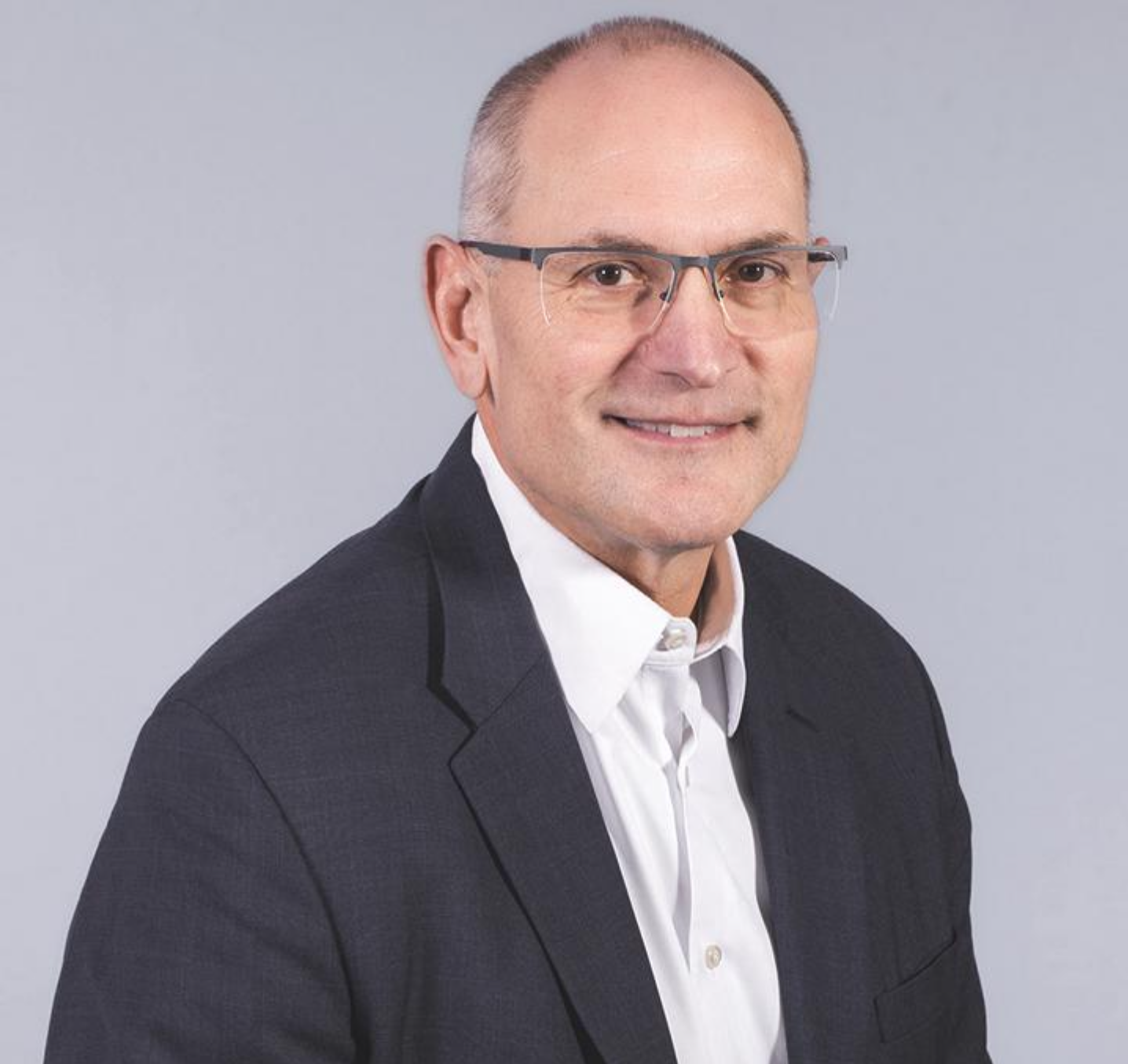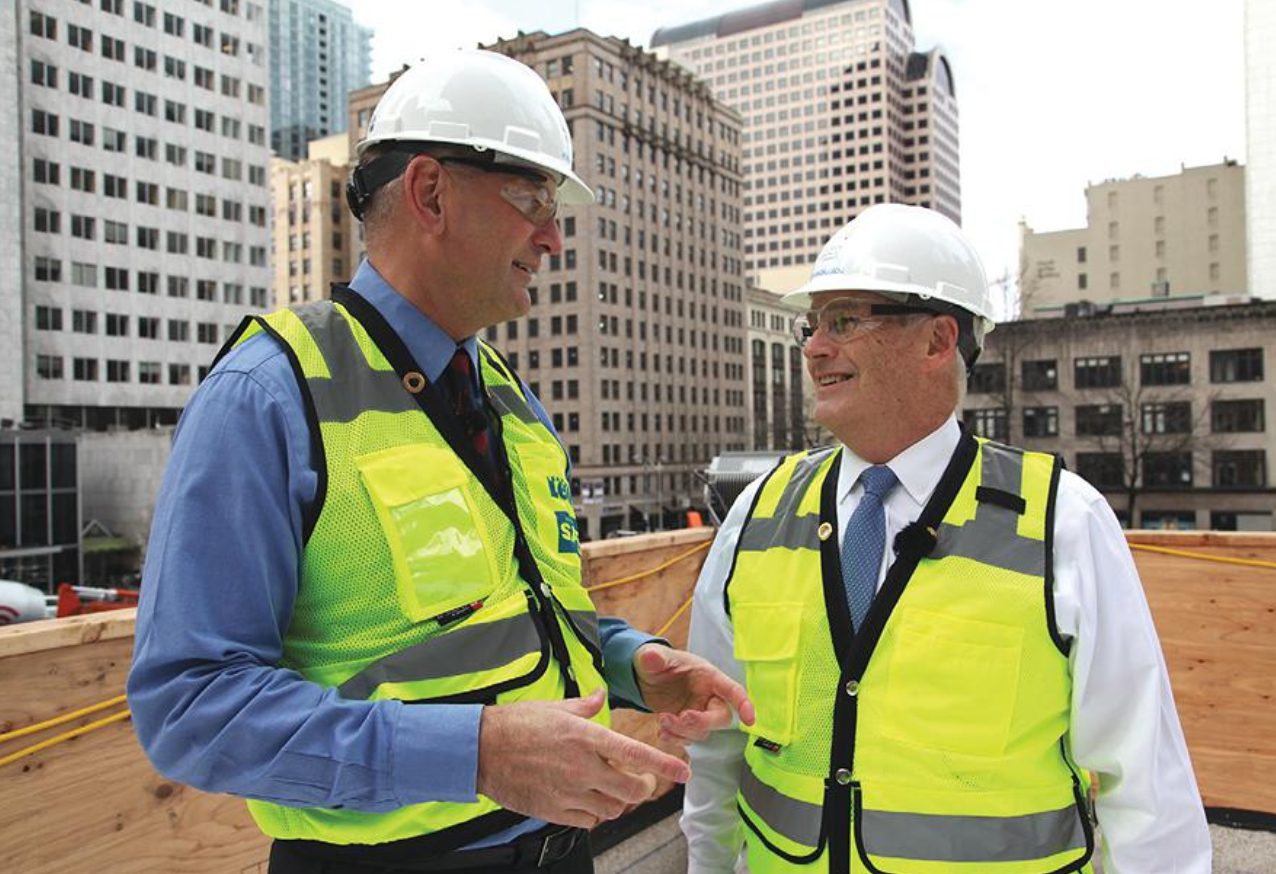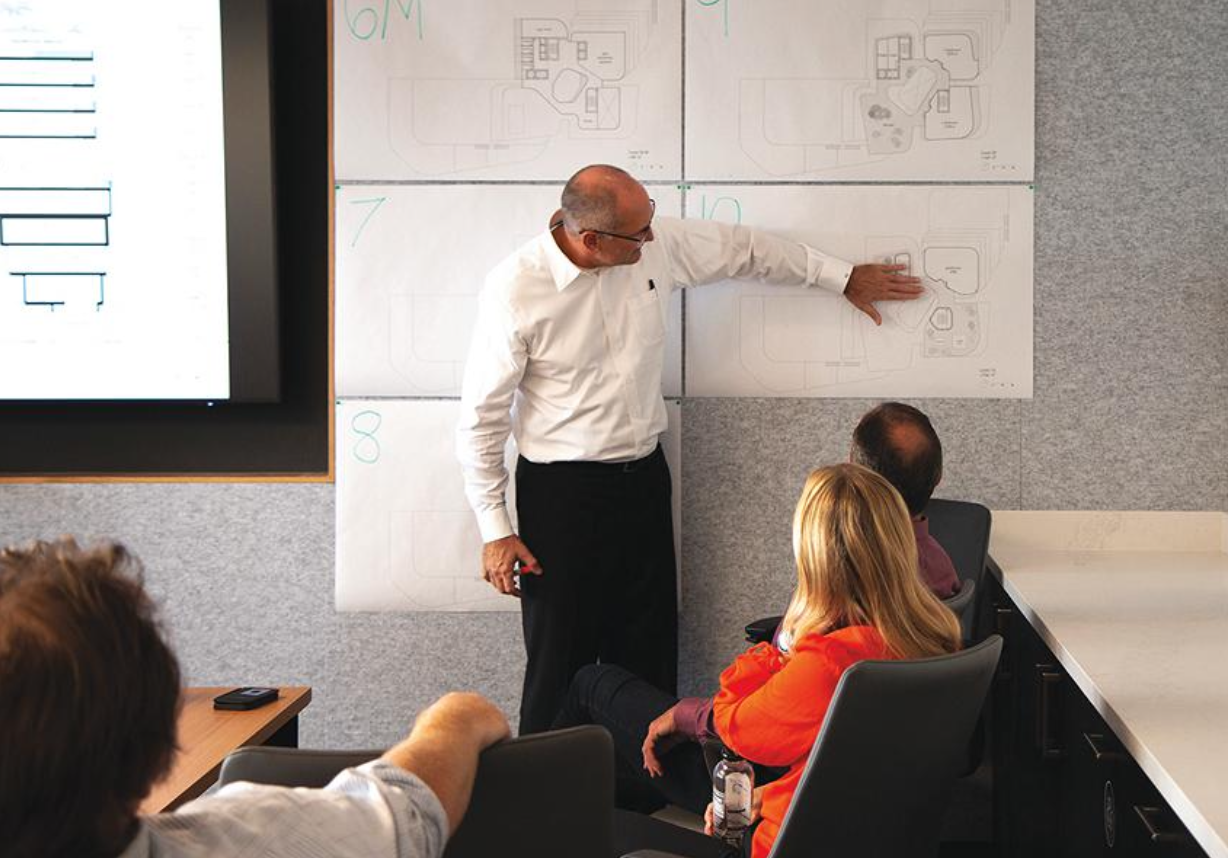Ron Klemencic is Chairman and CEO of Magnusson Klemencic Associates (MKA), an award-winning structural and civil engineering firm headquartered in Seattle, Washington. An industry innovator and preeminent practicing structural engineer, he is recognized for his creativity, “big picture” approach, and ability to produce cost-effective designs. Ron has been involved in the design of tall buildings around the globe, including San Francisco’s Salesforce Tower; Chicago’s St. Regis, 150 North Riverside, and Aqua; and Seattle’s Rainier Square. In addition, he has led the research and development of industry-advancing innovations, including SpeedCore and Performance-Based Seismic Design. He is also a Director of the Charles Pankow Foundation and the MKA Foundation.

Ron’s distinguished career has been marked with numerous honors, with some of the most recent including induction into the National Academy of Construction (NAC) and the National Academy of Engineering (NAE), being appointed a Distinguished Member of the American Society of Civil Engineers (ASCE), and being named an ASCE/Structural Engineering Institute (SEI) Fellow.
He is a member of the UC Berkeley Civil and Environmental Engineering Department’s Academy of Distinguished Alumni. He received the Distinguished Engineering Alumni Award and Civil Engineering Alumni Achievement Award from Purdue University.
The following is STRUCTURE Editorial Board Chair John Dal Pino’s interview with Klemencic.
My first experience with Magnusson Klemencic Associates (then called Skilling Ward Magnusson Barkshire) was on 100 First Street in San Francisco, when I met John Skilling. There were significant cost savings with custom steel sections fabricated in Korea and containers of steel arriving at the site for assembly. What does that say about innovation at MKA, then and now?
Our firm has a 104-year history of challenging the norms, pushing boundaries, and thinking creatively. These traits are embedded in our culture. In fact, our firm’s mission statement is “Always Striving for Better,” which sums up our collective motivation and approach.
Would you mind describing how you got to where you are at MKA and what aspiring young engineers can learn from your experiences?
My career path has been fueled by an insatiable appetite to learn. I constantly seek to understand “why” things are the way they are, which often reveals opportunities to think differently. I am immensely curious and tenaciously competitive—always striving for better. Applying math and science to solve engineering problems simplistically and elegantly always trumps elaborate computer analysis and complicated spreadsheets. The best engineering occurs at the intersection of art and science.
Innovation is a result of culture. Not top-down or bottom-up. As recognized innovators, how do you motivate the staff?
Primarily by encouraging them to always question everything. The best ideas can come from anyone and at any time. Working together daily, in person, in our single office in Seattle fosters these opportunities.
Most companies tend to expand with many branch offices. You have resisted that tendency. What benefits does that offer the firm and its staff?
Through our daily, in-person collaborations in a single office, we can accelerate training, avoid costly mistakes, and inspire each other by combining and leveraging our individual skills and expertise. In addition, there is a high degree of camaraderie amongst the employees, resulting in staff longevity.
Every firm strays from its core mission from time to time. Would you cite a good and bad result and what you learned?
With 104 years of company history, MKA benefits from the lessons learned of yesteryear, and we are very disciplined in our commitment to our core values and strategies. Occasionally, questions arise and challenge our thinking, but we have remained steadfast in our commitment to what we do and how we do it.
One example that comes up with some regularity is the question of opening additional offices in other cities or locations. At one time in our firm’s history, we had five offices. We learned from that experience that (a.) the remote office may not be as skilled as the home office, and the firm’s work product and reputation suffer, and (b.) the remote office may grow to be as strong as the home office, ultimately leading to competition amongst offices. Neither of these scenarios is attractive to us. As such, we maintain a single office in which we can collaborate daily, delivering a consistent and reliable work product.

Most CEOs drift away from doing projects. But you are clearly involved in SpeedCore. What does that say about you and your company?
At MKA, the most senior leaders still do the work. We are passionate about contributing to the creative process and providing our clients with consistency, reliability, and creative thinking. With senior leadership intimately involved in the daily engineering tasks, it limits the number of projects we can take on, but we are good with that. We believe in quality over quantity.
MKA was an early leader in Performance-Based Design (PBD) for seismic and wind loads. Where is PBD going to take the profession in the future?
Prescriptive codes have become increasingly oppressive, often hindering creative thinking or, worse yet, fundamental engineering thinking. PBD methods unlock code-imposed handcuffs, allowing engineers to use their skills and creativity to design more efficiently, effectively, and with substantially reduced embodied carbon.

Your tall buildings have pushed “the limits” in many aspects. How have you been successful in demonstrating “code compliance”?
Over the last 20 years, Third Party Peer Review has become essential to the review and approvals process. Most Authorities Having Jurisdiction (AHJs) are open to such a process, and these reviews have proved invaluable. Better designs have resulted, and the state of our practice has advanced through interactions between the Engineer of Record (EOR) and the Peer Reviewers.
Engineering can seem a little on the humdrum side to many. Without giving away any secrets, what do you think the next big thing will be?
We are working on several “next big things.” Most exciting are our advancements with Performance-Based Wind Engineering, embodied carbon reduction, and a modular, prefabricated allsteel floor system that will accelerate construction schedules by upwards of 30 percent.
I think most engineers would agree that current prescriptive code provisions limit innovation and waste engineering fees. If you could eliminate some code provisions, which ones are at the top of your list?
- Response modification factors for seismic design.
- Redundancy Factors.
- Torsional Amplification Factors.
- Any other artificial factors that attempt to “simplify” what we can investigate and quantify.
Mentorship has been and continues to be a huge topic of discussion. How do you approach it? Would you like to recognize a mentor of yours?
Mentorship is about availability and engagement. Mentorship should be driven by the personal choices of the mentee and cannot effectively be forced. Taking the time to engage with thought fulness, interest, and care is the most effective approach.
Over my career, I have had several mentors, but none more important than Jon Magnusson. Jon has taught me so much about engineering, running the business, and life in general. Words cannot express adequately my gratitude.
In terms of skills, what should future engineers focus on?
Think! Don’t fall into the trap of mindlessly following prescriptive building code requirements or relying too heavily on computer analysis, especially the allure of artificial intelligence. Instead, strive to apply “real intelligence,” for it is only through thought leadership and collaboration with others that new innovations will be discovered.
On a personal and a professional level, two separate things, what would you like to be remembered for?
Personally, I would like to be remembered as someone who cares deeply about all those around me, particularly my family. Professionally, I would like to be remembered as someone who contributed to advancing our profession in a positive and collegial manner.
If you weren’t a structural engineer, what would you be doing?
Teaching and growing vegetables.■
